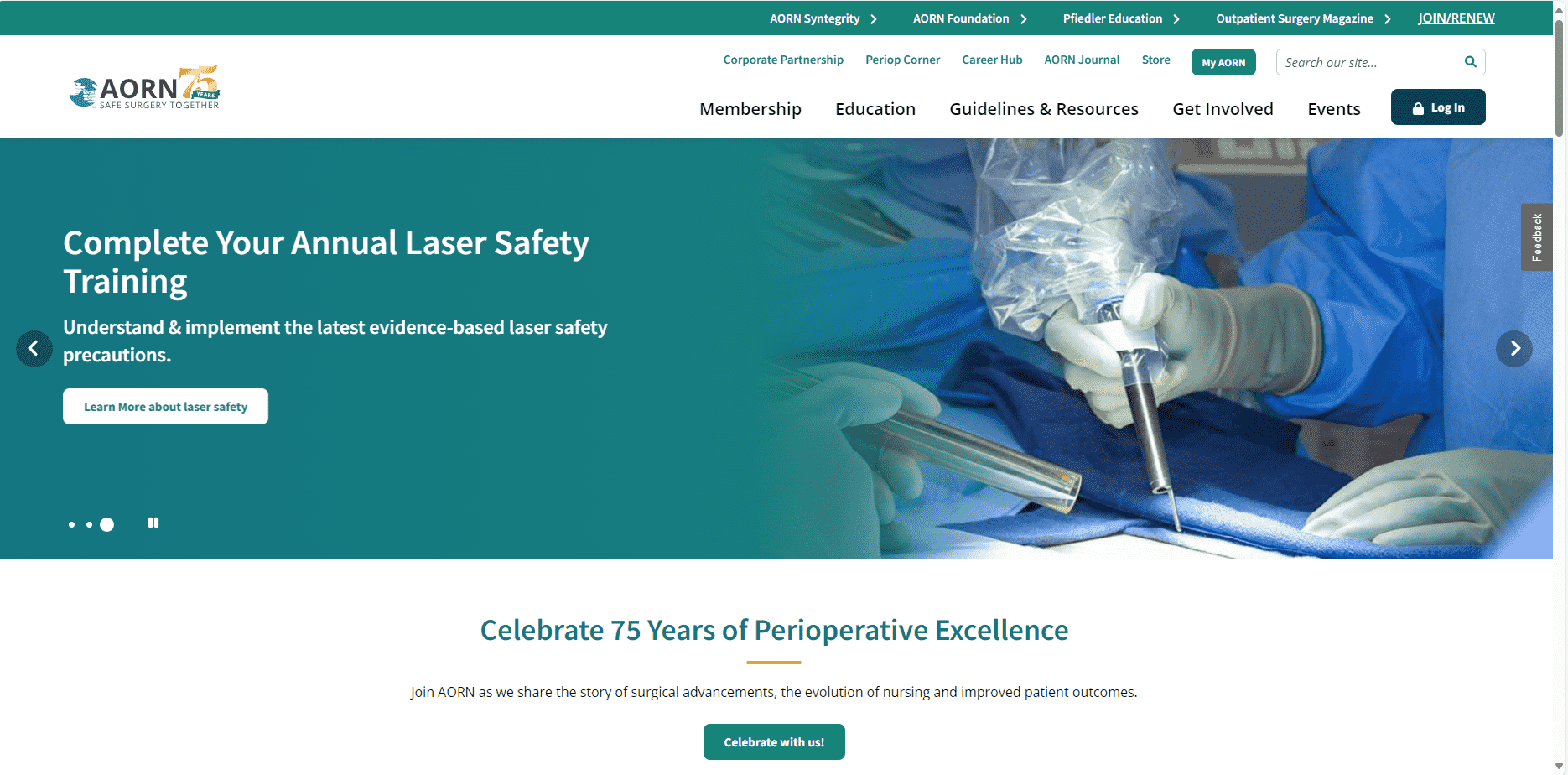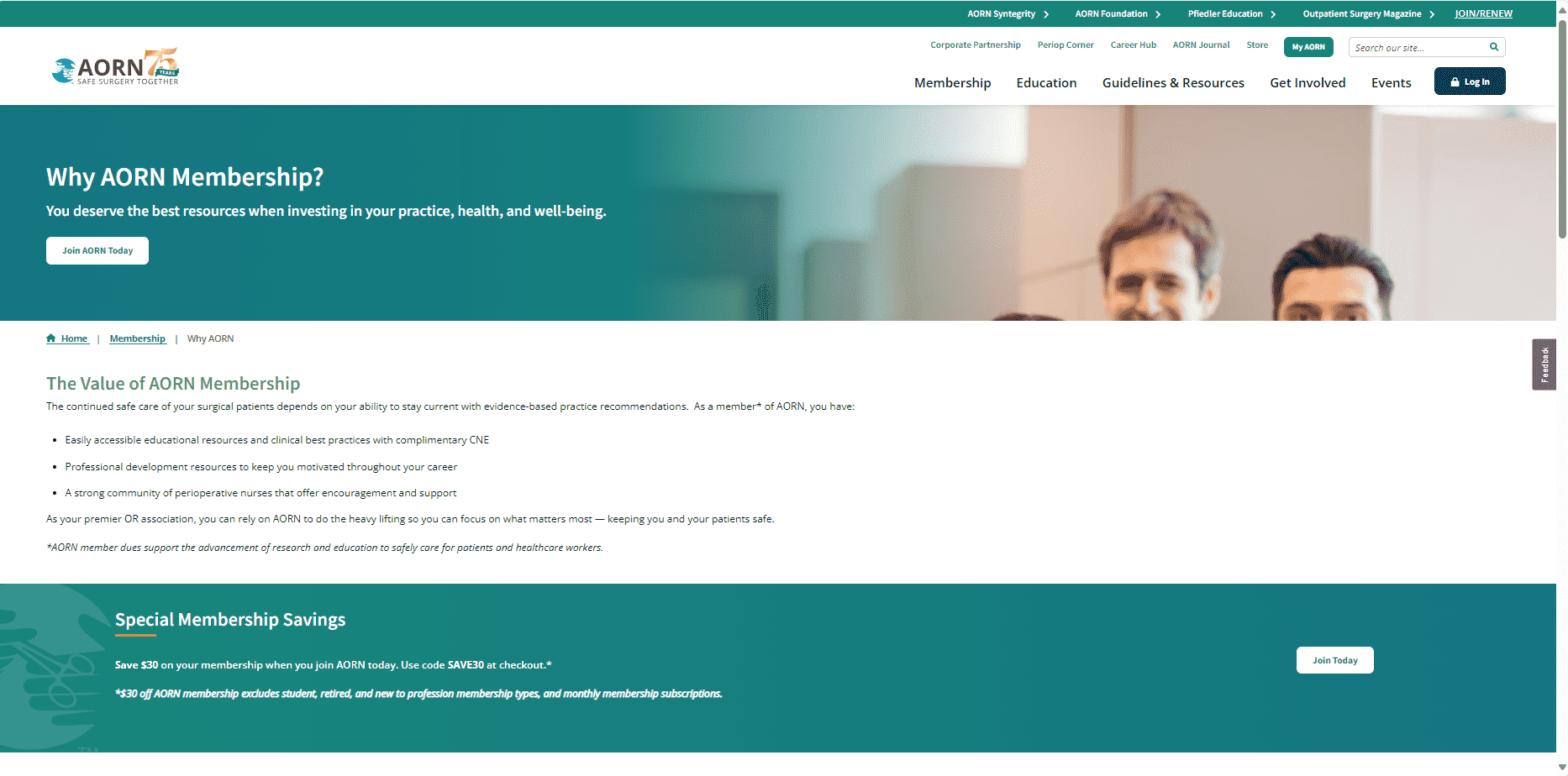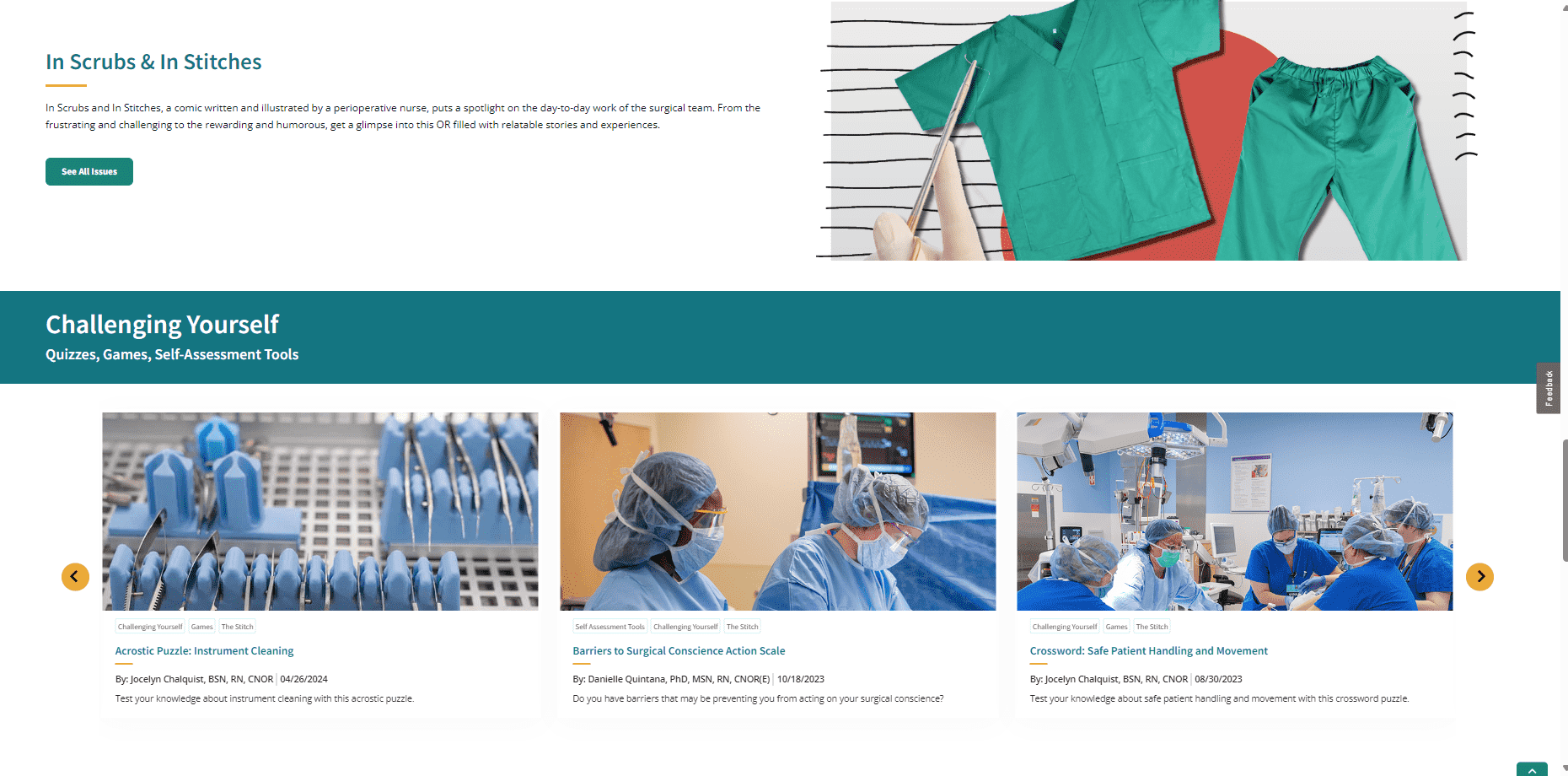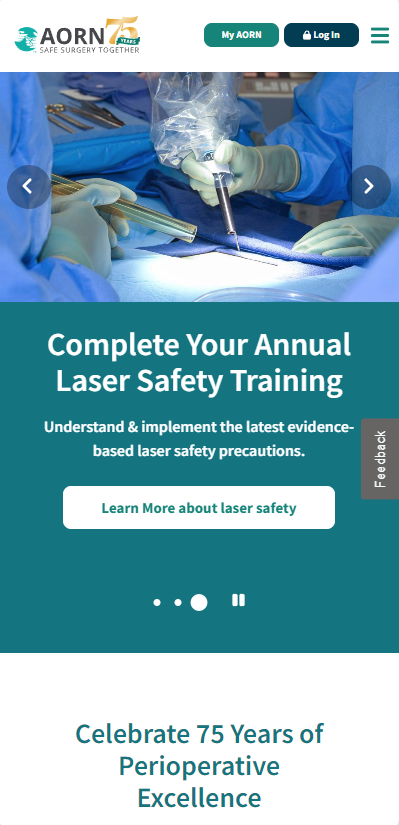AORN
Services we provide:
- Digital strategy
- Website data tracking & analysis
- Website design & development
- Progress Sitefinity implementation
About AORN
AORN is the Association of periOperative Registered Nurses, a community that started in 1949 in order to share best practices for operating room nurses. AORN is celebrating 75 years of being the largest family of organizations dedicated to supporting nurses and surgical teams with over 44,000 members nationwide. AORN shares information with its members through their digital assets, including the website. AORN came to the experts at SilverTech wanting a new digital member experience across all the AORN websites.
The Process
SilverTech’s strategy team reviewed the most current data from AORN and provided recommendations for enhancing components of all the websites for optimized data accuracy and clean data collection going forward. With this project, SilverTech met the challenge of moving seven websites from Sitecore to Sitefinity. Progress Sitefinity was the newly chosen platform for its ease of use, rich functionality and fully customizable features. This project required a design of seven unique styles and brands, creating widgets and content types that would accommodate their content needs for each of the seven entities. This includes the Outpatient Surgery magazine which had more than 12,000 articles. Other challenges with this project included the incorporation of ad space throughout the sites, SSO and member login functionality, custom search, scripted content migration and more.
RESULTS
How to Find and Use High-Quality Images for Your Website
10/1/24
Gathering imagery can be one of the most time-consuming tasks during a website build. Deciding where to source your images, managing licensing costs, hiring photographers, and defining the story you want to tell through visuals can quickly become overwhelming. This can eat into valuable time and resources, sometimes delaying other critical parts of the project.
Why Are Images Important for a Website's Success?
Imagery plays a crucial role in telling your site’s story and helping users quickly grasp its purpose. Poor-quality images can make your website look unprofessional, leading to bad first impressions and reduced user engagement. Additionally, unoptimized images can significantly slow download times—just a 3-second delay can cause nearly 50% of visitors to leave before the site even finishes loading.
The first image users see is particularly important, as it sets the tone for their entire experience. It can determine whether someone stays to explore your content or leaves before even scrolling down. That’s why it’s essential to choose visuals that grab attention, effectively communicate your message, and resonate with your target audience.
Sourcing Your Imagery
Choosing how to source your imagery is where the process truly begins. Here are the main methods:
1. Using Stock Photo Websites (e.g., iStock, Unsplash)
Pros:
- No need to hire photographers or use in-house resources.
- Thousands of photos are readily available and easily searchable.
- A photo exists for nearly anything you might need.
Cons:
- Limited customization of imagery.
- Images are gathered without specific design considerations for your website.
- You often have to pay for licensing, and you won’t own the photos.
2. Contracting or Hiring a Photographer
Pros:
- Tailored to your specific needs.
- Provides consistency in style and branding.
- Delivers a polished, professional look superior to DIY or stock images.
Cons:
- Expensive, especially with travel or equipment costs.
- Once the photo shoot is complete, changing the images is difficult and costly.
Avoiding Common Image Mistakes
When gathering images for your website, keep these key aspects in mind:
1. Aligning Images with Website Design
Beautiful photos can enhance your website, but if they don’t fit within the design, they can cause issues. Ensure that your images work with the dimensions of your website components (e.g., widgets, banners, galleries).
- Why it matters: Improper image sizing can result in awkward cropping, or important details being lost, leading to poor visual presentation.
- Tip: Check aspect ratios and resolution requirements for different sections of your site before selecting or creating images.
2. Optimizing Image File Sizes for Web Performance
High-quality images are important for aesthetics, but large file sizes can harm website performance. Unoptimized images can slow down page load times, frustrating users and increasing bounce rates.
- Why it matters: Large image files can slow down your website, especially for mobile users or those with slow internet. This impacts both user experience and SEO rankings.
- Tip: Use image compression tools to reduce file sizes without sacrificing quality. Aim for a balance between visual appeal and quick load times by using JPEGs for photos and PNGs for graphics that require transparency.
Common tools to resize images include:
- TinyPNG: Compresses PNG and JPEG images, reducing file size without compromising quality.
- Image Resizer: Allows resizing, cropping, and rotating images online. You can customize width and height.
Even programs as basic as Paint 3D can help you edit and resize images with ease, regardless of your photo editing skills.
Want to learn more? Check out our article on Image Optimization for additional tips!
Enhancing Accessibility and SEO with Alt Tags
Including alt tags, or alternative text, for your images is essential for both accessibility and SEO. Alt tags provide descriptions for screen readers, making your site more accessible to visually impaired users. They also help search engines understand your images, improving your site’s search ranking.
To maximize impact, keep alt text concise yet descriptive. For example, instead of “dog,” use “Golden retriever playing in a park.” This ensures your images contribute to a better user experience and help drive traffic from image searches.
Conclusion
There’s no one-size-fits-all solution for gathering website imagery, but that doesn’t mean you can’t find the perfect approach for your organization’s needs. Consider the tips above to guide your decision-making process and create a visually stunning, high-performing website.




